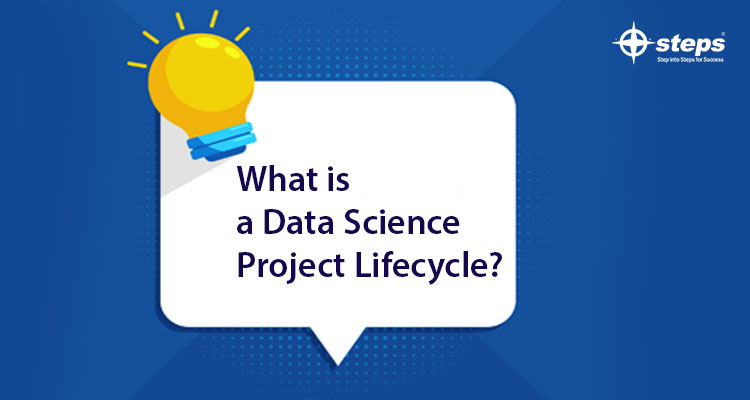What is a Data Science Project Lifecycle?
Since the term was coined in the 1990s, data science has progressed significantly. When handling a data science topic, experts in the area adhere to a set of guidelines. Carrying out data science initiatives has virtually become an algorithm.
There’s a strong urge to skip over approach and go right to solving the problem. However, by not creating a firm basis for the entire effort, we are hindering our greatest intentions. Following the steps, on the other hand, usually brings us closer to the problem we’re trying to address.
- Business Understanding (a.k.a. asking the right question)
Even though data access and computing power have both increased dramatically in the last decade, an organization’s success is still largely determined by the quality of questions it asks of its data set. The amount of data collected and the amount of computation power allocated are less important differentiators.
- Data Gathering
If the key to success is asking the correct questions, data is the key component. Data collection becomes a matter of breaking the problem down into smaller components once you have a clear understanding of the business. The data scientist must understand which ingredients are required, how to obtain and collect them, and how to prepare the data in order to achieve the desired result.
- Preparation of Data
We’ve already gathered some information. We learn more about the data and prepare it for future analysis in this step. Is the data you obtained representative of the problem you’re trying to solve? The data understanding component of the data science approach answers this question. The following steps are usually included in the preparation process.
- Missing data management
- Invalid values must be corrected.
- Getting rid of duplicates
- Organizing data so that it can be fed into an algorithm
- Feature development
Data collection, data interpretation, and data preparation can take up to 70% to 90% of the total project time.
- Modeling of Data
Modeling is the step in the data science technique where the data scientist gets to try out the sauce and see if it’s spot on or needs a little more seasoning. Modeling is a technique for identifying patterns or behaviours in data. These patterns can assist us in one of two ways: 1) descriptive modelling, such as recommender systems, which assume that if a person enjoyed the movie Matrix, they will enjoy the movie Inception as well. or 2) predictive modelling, which entails predicting future patterns (e.g., using linear regression to forecast stock exchange values).
- Iterate and deploy
At the end of the day, all data science efforts must be implemented in the real world. Your data model, in whatever shape or form it takes, must be exposed to the outside world. You’ll almost certainly get feedback after it’s used by real people. The ability to capture this feedback is critical to the success of any endeavour. The more effectively you gather input, the more effective your model adjustments will be, and the more accurate your ultimate outcomes will be. At this point, most businesses document the process and engage engineers to keep iterating on it.
Iteration is a key component of a data science endeavour. You keep repeating the procedures until you’ve fine-tuned the system to your unique situation. As a result, the majority of the preceding stages will be running in simultaneously. The most popular data science languages are Python and R. You can become more familiar with the entire concepts and practice more through Data Science training institute in Kochi. The right kind of training is required to understand the lifecycle of a Data Science project which can be availed by the extensive course provided by the Best Data Science training in Kochi.

